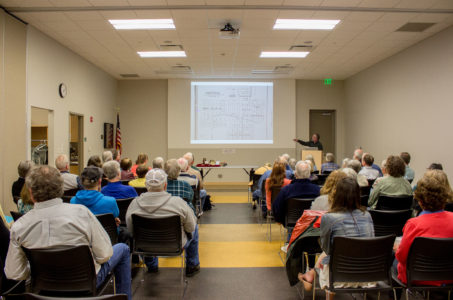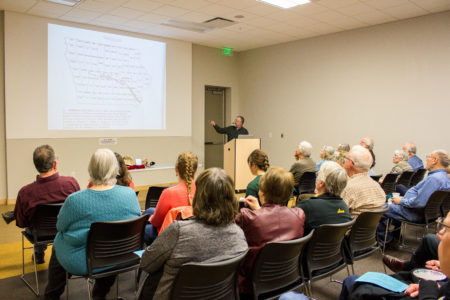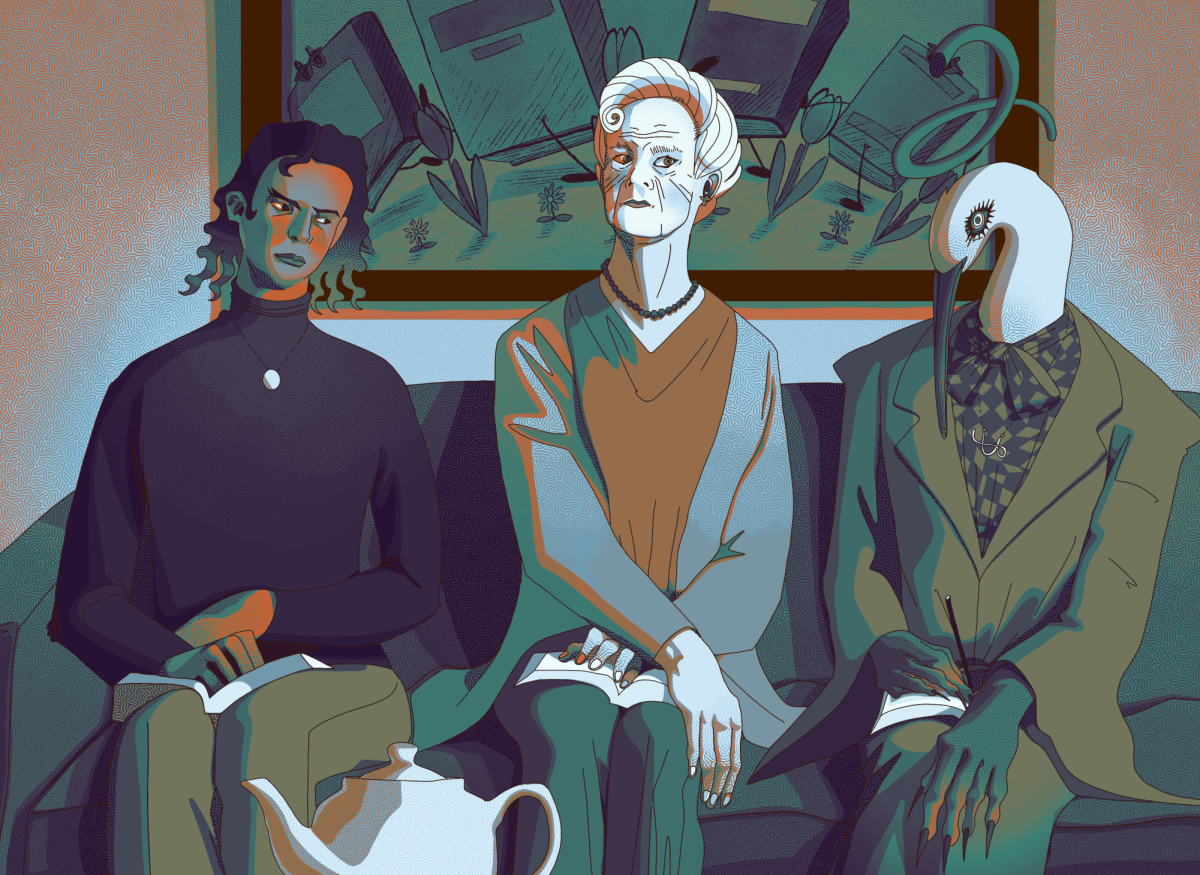
On Feb. 27 at 7 p.m. at the Drake Community Library, local historian Byron Hueftle-Worley presented his research on the tornados that passed through Grinnell in 1882. These tornadoes infamously left destruction in their wake, demolishing a large number of College and residential buildings and taking human lives. The event was hosted by the Friends of Drake Library and was also accompanied by photographs and artifacts from the Grinnell Historical Museum.
Hueftle-Worley started by setting the scene, taking the audience back 136 years in history.
“June 17th of 1882 was a typical hot summer afternoon here in Iowa. … [T]he sky started darkening, finally turned black, and a thunderstorm broke a bit after 7:30 [p.m.] that was increasing in intensity until it got to the point where the thunder claps were overlapping, and there was an almost continuous flashing of lightening to the west side of the town. After quite a bit of that, it calmed down and left that horrible sickly greenish sky that any long-term Iowan has learned to dread.”
Two tornados hit Grinnell at the same time. The historical record, “The Grinnell Cyclone of June 17 1882,” noted “the shorter one [struck] the town first and on its western borders, and the other [came] from the northwest and [entered] the town on its northern border about midway between its east and west boundaries.” According to the Tornado Project, the tornados killed 68 and 300 people, respectively, in Iowa, with 39 of those deaths occurring in Grinnell. In addition, the storm wreaked destruction on the town: 73 houses and two of the College’s buildings were destroyed.
After giving some context on the tornado, Hueftle-Worley showed a map of the storm path that he had created.
“This is the first time I’ve gotten to show this map to anybody,” Hueftle-Worley said. “This is based on about ten years of research trying to figure out where people lived.”
He faced significant challenges when creating the map because of a lack of resources. The best contemporary town directory showing where people lived dates from 1878, and in addition to being four years out of date, it was both inaccurate and incomplete. A directory was made 12 years after the tornado in 1894, but it had even less information on the state of Grinnell’s land in 1882. Furthermore, few people owned telephones, meaning no telephone directories exist from the period. The main source of information on damage from the tornado was a newspaper published four days after the storm. However, even many of those accounts were vague, making it necessary for Hueftle-Worley to try and patch together different information to pinpoint who lived where.
“[When] the newspaper is talking about loss, they would use terms like ‘so-and-so’s house,’ but they would also say ‘so-and-so’s house where so-and-so else lived,’ or they would say ‘so-and-so’s house, Mr. so-and-so’s house,’” he said. “It becomes rather indistinct whether Byron’s house is where I live, Byron’s house is one I own, or Byron’s house is one that I own that somebody else rents. It could be any of those three, and without having any cross reference, it’s rather difficult to figure it out. So you’ll see that that storm track is not as distinct as I’d like it to be.”
Most people were left to fix the damages to their property themselves, without the aid of insurance.
“It was relief from a disaster, not recouping your losses,” Hueftle-Worley said.
The minimal financial compensation that was handed out come nowhere close to covering the cost of damages. Hueftle-Worley gave an example of 1126 Broad Street, a house which he bought when he moved to Grinnell, that had suffered over $2,000 of damage, but only received $750 of relief. In 2017 dollars, this equates to about $19,000 to cover roughly $52,000 of damage.
The presentation also featured photographs of obliterated houses, including buildings that once stood where Mears Cottage, the Harry Hopkins House and Burling Library parking are today. Crowds of people were photographed in many of these pictures, and Hueftle-Worley explained that, for a while, tourists came to Grinnell to view the damage of the tornadoes. These outsiders took pictures, and some even stole items from destroyed houses.

Hueftle-Worley also showed photographs of two College buildings, Brick College and Stone College, before and after the tornado struck. The last picture he showed was of a bell from the destroyed Brick College lying on the ground. That was the very bell that is rung every year at the College’s commencement ceremony and currently sits in the Noyce Science Center.
The informative talk ended with a Q&A and was followed by a meeting of the Friends of Drake Library, which was open to the public. The tornado talk served as a reminder of the importance of the history that has made Grinnell the town it is today, shaping our understanding of today’s streets, houses and College buildings.


































































Byron Hueftle-Worley • Mar 7, 2018 at 4:58 pm
Sarah Ruiz has done an excellent job of covering and condensing my tornado talk. I don’t know what her major is, but I will suggest that she should at least consider journalism for her graduate studies.